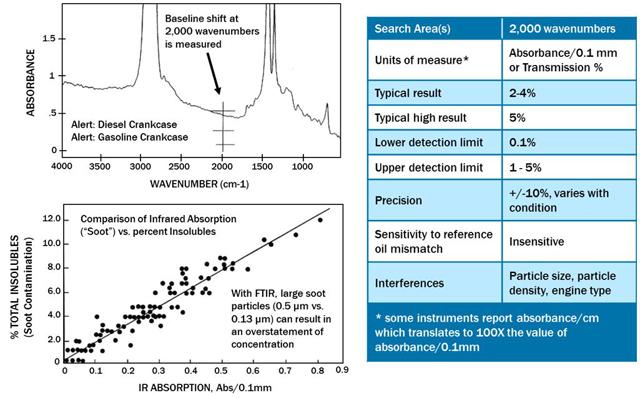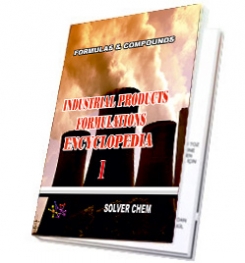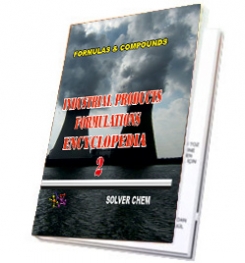There are several available tests that can detect soot load in diesel oil. As a screen test with a lower cost, FTIR is a great indicator of soot. It is capable of measuring more than a dozen parameters, with some more reliable than others depending on the susceptibility to interference in the established wavenumber region. While the data collection is relatively easy, there are challenges with measurement accuracy, especially as the size of the soot particles increases and constituents like dirt are included. The maximum detection limit can range from 1.5 to 5 percent. This is concerning since the critical limits for engines with exhaust gas recirculation (EGR) may be 8 percent, and non-EGR systems may be around 5 percent.

Other alternatives include the pentane insolubles test, the light extinction method and thermogravimetric analysis. The pentane insolubles test consists of separating insolubles from the oil with the aid of a solvent mixed with the lubricant. The solvent may commonly be pentane and toluene. The insolubles are flung out of the mixture with a centrifuge or filtered out with a filter membrane. While this is a preferred method with a lower cost, it poses concerns when other insolubles are included, as they will be measured together.
The light extinction method involves light being casted at specific frequencies through the oil and then measuring its obstruction by the drop in voltage. Again, there are some issues with this method related to other potential objects obstructing the light, even water and air bubbles.
Thermogravimetric analysis may be the most accurate measurements of soot load in an oil sample. It requires heating a sample through different stages to calculate the soot concentration by comparing the difference in weight of the volatile ash components to the original sample. This test may have a much higher cost, so it is not a viable substitution for routine tests. Nevertheless, it is perfectly acceptable for exception testing after a screening test has been performed.
Soot dispersancy is an important lubricant property. It is defined as the lubricant's ability to keep soot particles finely dispersed and avoid agglomeration into larger soot particles. This can be measured with a simple method known as the blotter spot test, which allows for a visual representation of the soot's dispersancy.

any engine oil
LUBRICATING OIL
FORMULATIONS
ENCYCLOPEDİA
is enough.
LUBRICATING OIL FORMULATION ENCYCLOPEDIA has many formulations of greases, complex grease, lithium grease production,sodium greases formula, formulation,multigrade engine oils manufacturing process,motor oils making, gear oil production, synthetic engine oils,semi synthetic motor oils,gasoline oils,diesel oils production process,composition of turbine oils,transmission oil manufacturing, production of cycle motor engine, tractor oils,mineral based motor engine production,heat transfer oils, slideway oils formulation, formulations, cutting oils formula,formulas grinding oils,mould oils manufacturing process and etc.
All lubricating oils in the encyclopedia are producible easily.You need no help and no technıcal support. The encyclopedia is enough to produce lubricating oils and engine oils itself.
LUBRICATING OIL
FORMULATIONS
ENCYCLOPEDIA
is written clear and understandable.


HARD BOOK E BOOK
RELATED TAGS: What is engine oils,making synthetic diesel engine oil,semi synthetic engine oil manufacturing process,mineral based engine oil production, heavy duty engine oil formulation,high performance engine oil formula,formulas,properties of motor oils,synthetic motor oil msds, analysis,composition of engine oils,additives of motor oils, mineral engine oil formulation,make semi synthetic diesel engine oil, base oils,synthetic base oils,light neutral oil,heavy neutral oil,performance additives package, properties of diesel engine oil, how to formulate engine oils, types of engine oils, synthetic motor oils,ingredients of engine oils,compounds of engine oils, index of motor oil,characteristic of motor oils,application of motor oils,combination of synthetic engine oils.
SOLVERCHEM PUBLICATIONS

|
|

|
|

|
|
